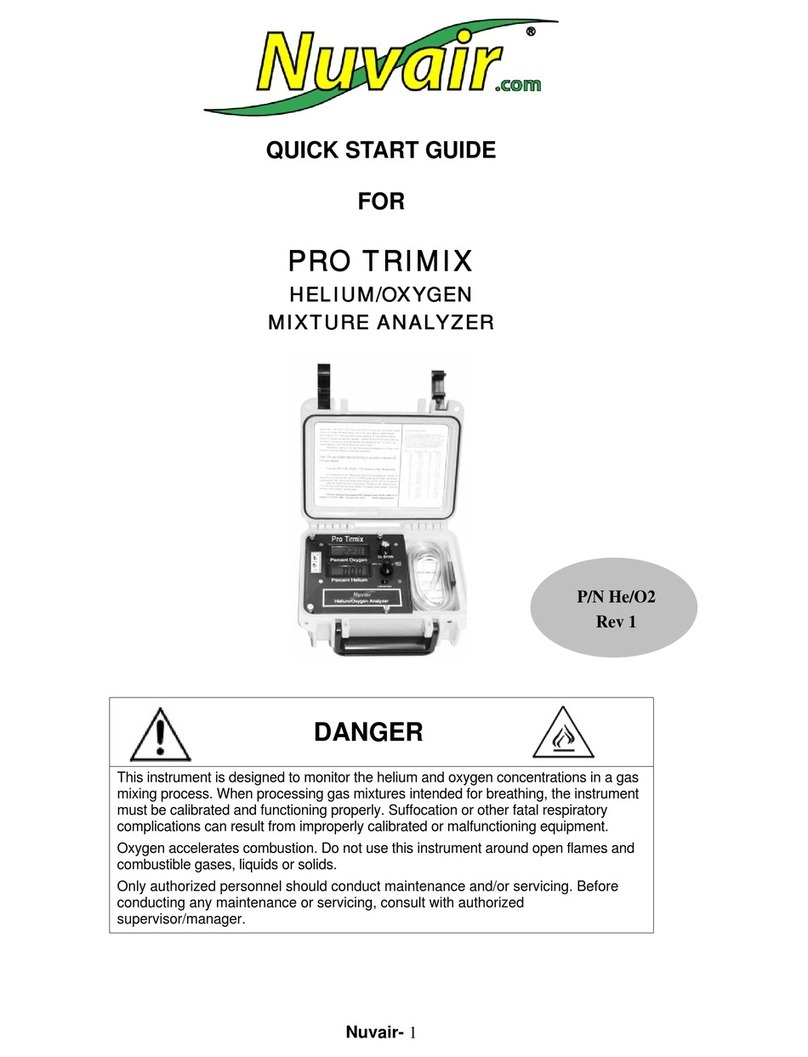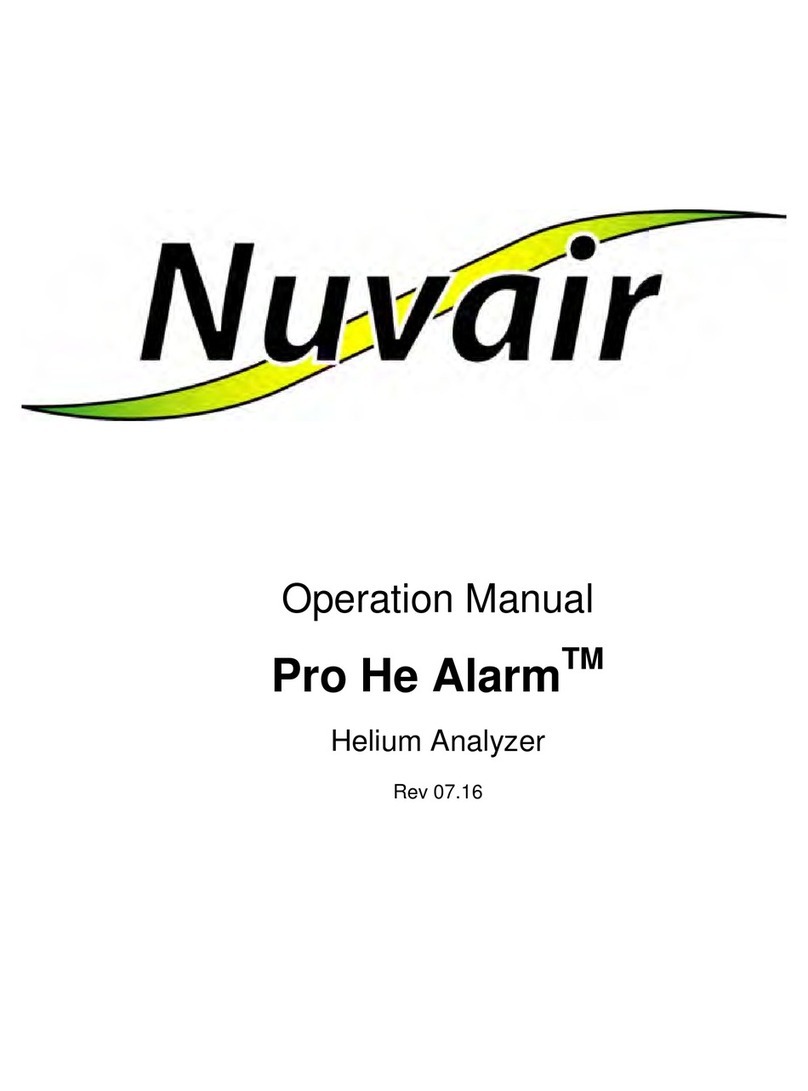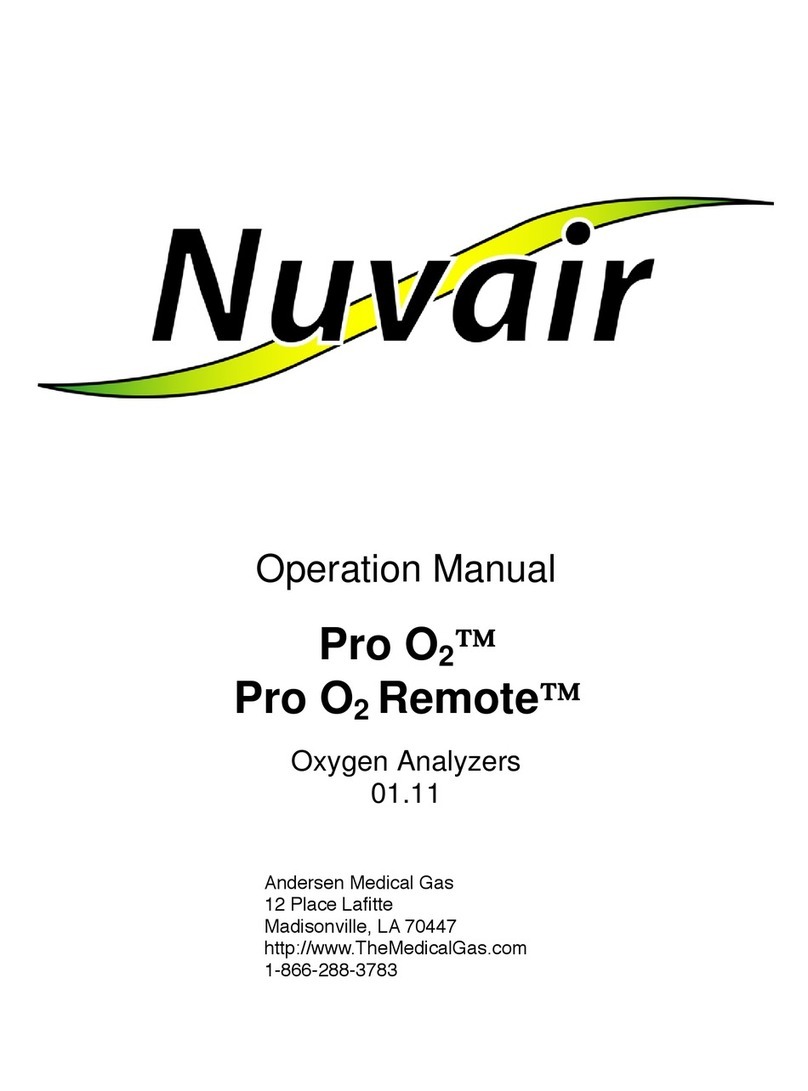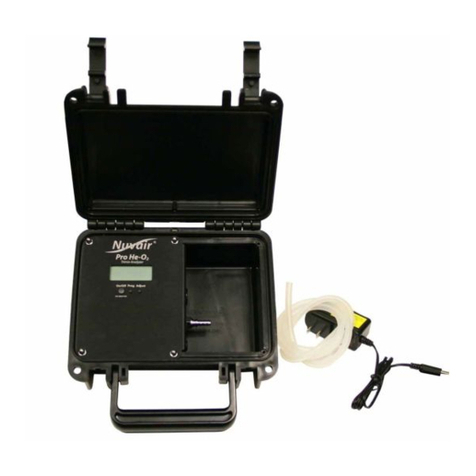
Pro VOC Alarm Analyzer
2. System Description
WARNING
When using the analyzer for applications with mixed gases other than air, you must first
obtain proper instruction from a certified diving instructor with a nationally recognized
training agency qualified in mixed gas diving. Improper use of this analyzer may result
in incorrect gas analysis which can lead to serious personal injury or death.
WARNING
Although the analyzer is a rugged instrument, careless handling or abuse may result in
damage to the analyzer resulting in inaccurate gas analysis. Inaccurate gas analysis
can lead to serious personal injury or death.
WARNING
Breathing gas must always be analyzed by two separate analyzers, with one used for
gas production and one used for analysis after production. Never depend on a single
analyzer during both gas production and delivery. If analyzer readings do not agree,
both units must be recalibrated. Inaccurate gas analysis can lead to serious personal
injury or death.
The Nuvair Pro VOC Alarm is designed to detect the presence of a volatile organic compound (VOC).
It can be connected to a gas compressor for continuous output reading, or it can monitor ambient air
(using diffusion mode) and will alert personnel in case of dangerous VOC concentrations in the air.
The Nuvair Pro VOC Alarm is a digital measurement instrument with two visible and audible alarms if
VOC value is above or below set values. It is based on a state-of-the-art Photo Ionization Detector (PID)
sensor with long-term stability and easy maintenance. It is possible to replace the internal lamp and
calibrate the sensor without factory assistance. It is strongly suggested to check the analyzer’s alarm
function prior any use (bump test1).
With a resolution of 0.01 ppm (parts per million), the Nuvair Pro VOC Alarm analyzer is designed to
measure volatile organic compounds levels directly from pressurized sources or ambient air.
The analyzer comes in either a handheld or panel mount configuration. It is powered by wall plug-in,
rechargeable lithium-ion battery, or DIN rail. It includes an internally mounted sensor with audible
alarm. The water-resistant case includes a digital display and controls that are environmentally
sealed.
The analyzer also has a 4-20 mA analog output for external devices. The analog output can activate
an optional relay to automatically shutdown/start-up equipment or sound an external alarm when the
analyzer alarm activates.
The analyzer uses a flow adapter cap and flexible tubing to deliver sample gas to the sensor.
Pressurized gases must be regulated to avoid damage to the analyzer.
1“Bump tests” ensure analyzers go into alarm when sensors are exposed to gases that exceed the analyzer’s
setpoint. A bump test is not a calibration test, but rather a test to determine if the analyzer will alarm as
expected.






































